Shifting focus from flowers, we thought to take a bit of a journey into the world of shrubs and trees for a while. Since time immemorial, man’s relationship to trees has taken many forms. Trees provide oxygen, shelter, protection, food and many other necessities, too many to innumerate here.
It is a fact that most humans strongly prefer landscapes with trees or areas that are wooded. Trees provide a sense of place, of being rooted within a specific place. We will explore ways to make a more conscious effort cultivate these relationships.
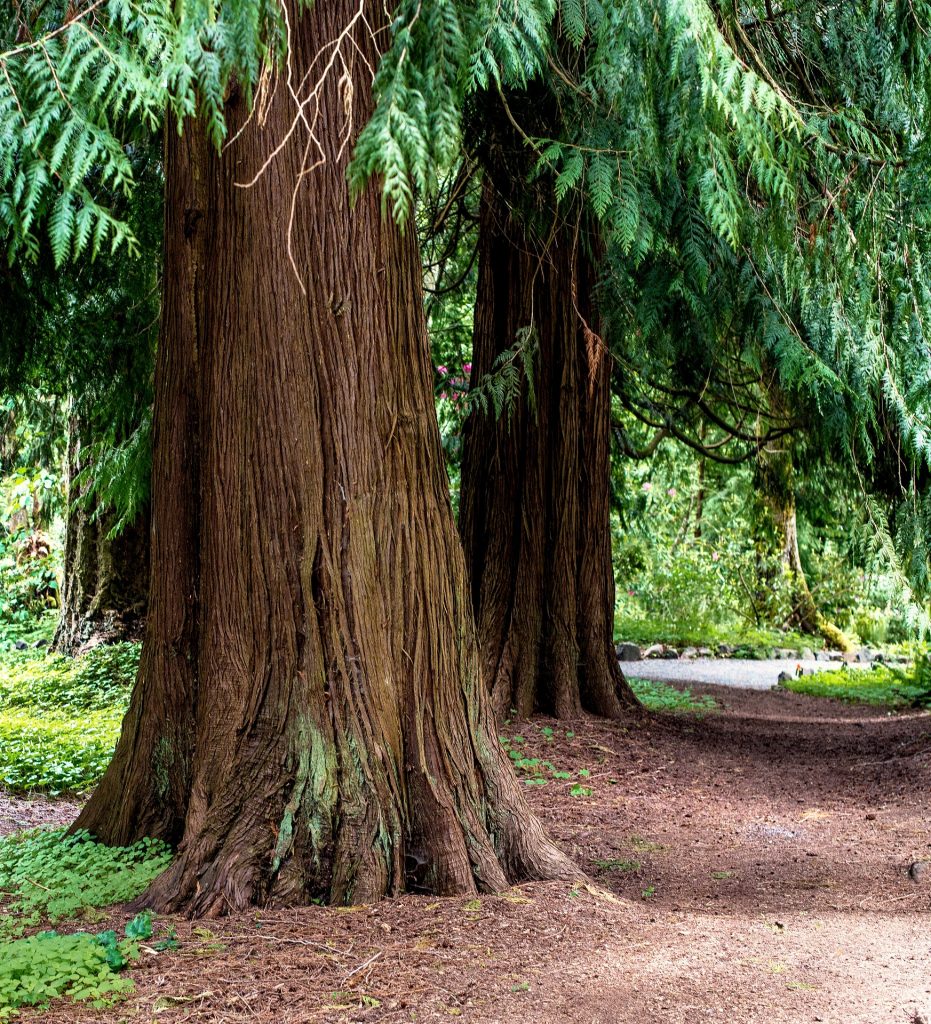
There are many trees with the name “cedar”. Our focus will be on the Western Redcedar, which is often misunderstood as a true cedar. True cedars have only 4 species within the pine family and they are native to the Middle and Far East (Deodar, Atlas, Cyprus and Lebanon cedars). These true cedars have evergreen needles which grow in clusters.
Among the trees in North America commonly referred to as cedars are the Eastern Redcedar and Western Redcedar. These 2 species, native to North America (with 3 other species native to Asia), are often known as “false” cedars. They are “cone-bearing” (coniferous) trees of the genus Thuja which is within the cypress family.
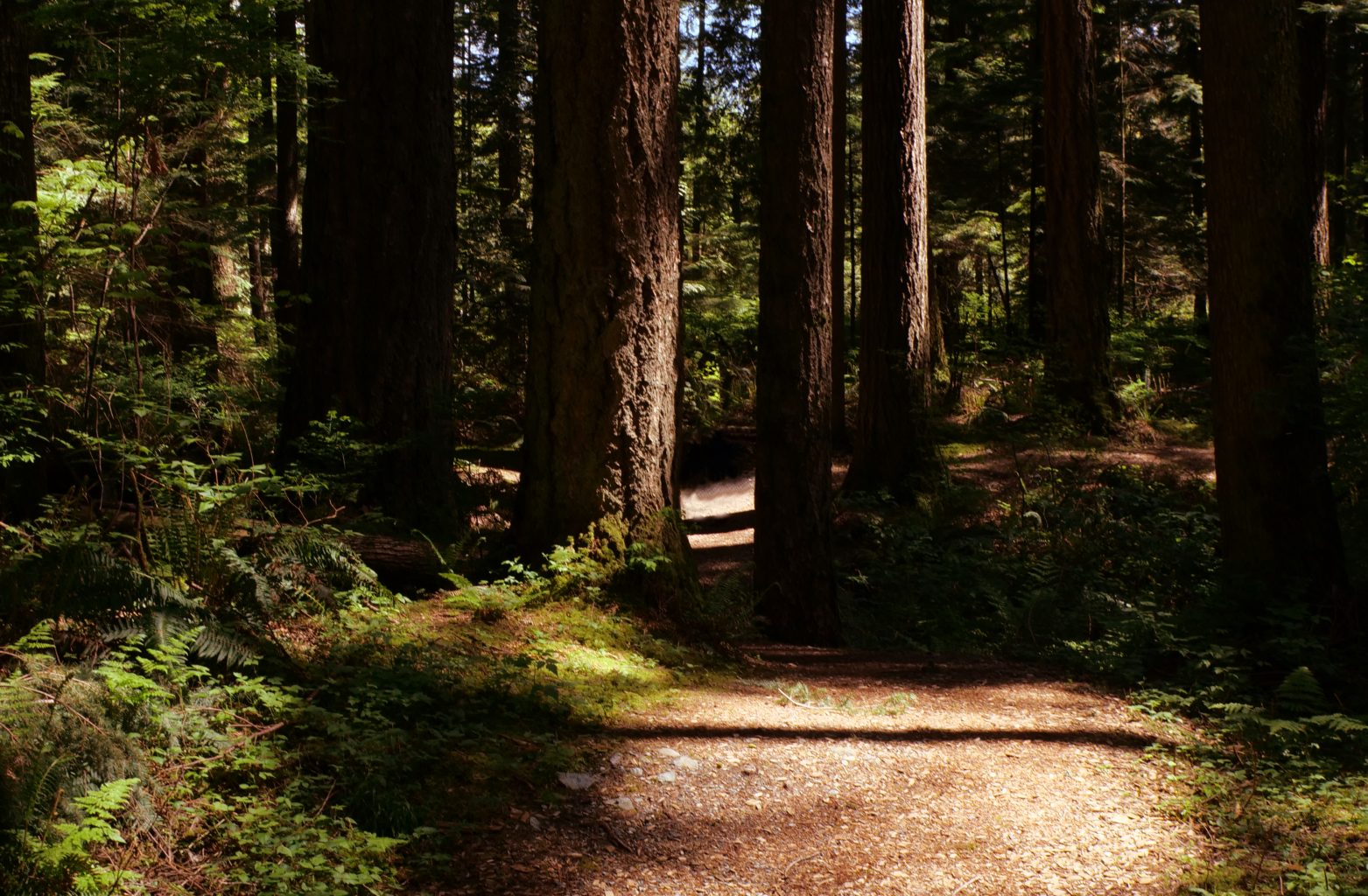
Both the Western and Eastern Redcedars are called Arborvitae (arbor-vitae), a word which comes from Latin and translates to “tree of life”. For the early explorers from Europe, it was literally a life saver as an herbal drink from the leaves of the Thuja occidentalis (Eastern White cedar) cured the remaining survivors of scurvy.
For the original coastal peoples, the Western Redcedar has always held special value. This is a story they tell: Before red cedar there was a man who generously supplied what his people needed. The Creator looked on him with favor, recognizing him for his good works. When this man died, the Creator caused a red cedar to grow where he was buried and proclaimed this tree would continue to provide for the people.

The Western Redcedar’s scientific name is Thuja plicata but it is often called Pacific red cedar, giant arborvitae or sometimes just cedar. The name “plicata” originates from a Greek word which translates to “folded in plaits”. This refers to the way in which the leaves overlap almost like scales in shingle- like fashion along the twigs.
The largest in the genus, these trees can grow up to 230 feet tall and 23 feet in diameter. They prefer a high-rainfall, mild climate although they can tolerate shade. The Western red cedar matures at 350 years old but can live well over 1,000 years with many estimated over 1,500 years old. The bark color ranges from red brown to grey, with the tendency to grey over time if the sun shines directly on it.
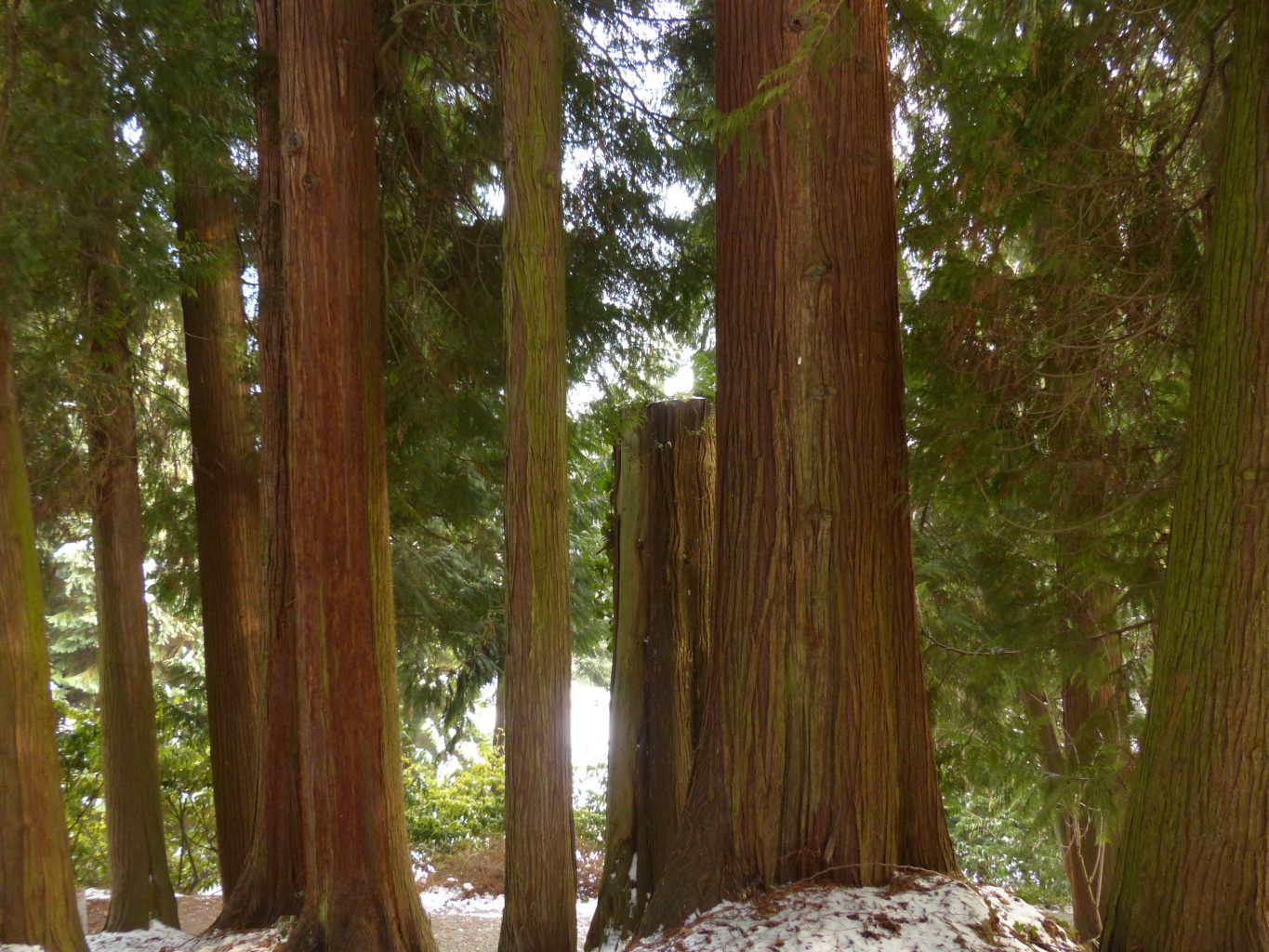
The distinctively fragrant wood of the Western Red Cedar is soft grained, lightweight and resists rotting, lending itself to flexibility, durability and water resistance. All parts of these trees are valuable – wood, bark, branches, roots and leaves. In times past, the roots were used to create many implements necessary to daily life including cooking baskets which were heatproof and watertight. Containers for food storage, great longhouses, sleek decay-free canoes and durable clothing were all fashioned from Western Red Cedar.
When the tree is mature, the bark can be pulled off straight trees in long strips which have great tensile strength, creating the ability to produce ropes and lashings. These were historically used for whaling and fishing, bindings for tools and weapons as well as substitutions for metal nails and screws in home building.
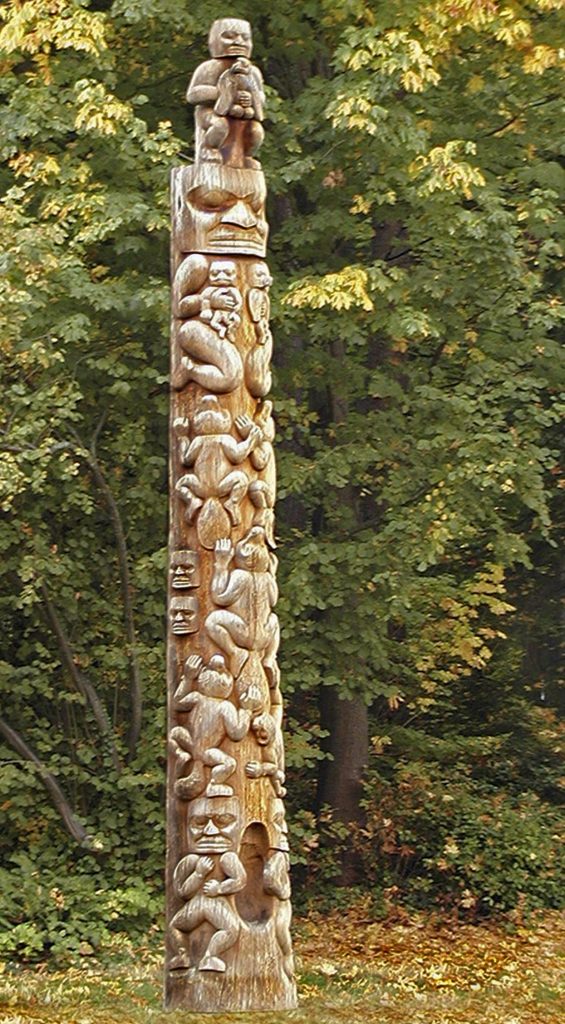
Aside from practical uses, the Western Redcedar has great medical, artistic and spiritual significance in the aboriginal culture including masks, cedar figures for potlatch, ceremonial regalia (such as head or neck rings or braided wristlets) and totem poles.
In the image above we see the Beaver Crest Totem Pole found in Stanley Park, Vancouver, B.C. which, along with others, was created from Western Redcedar. This unique carving does not carry any color, but relies on detail for its beauty. Each totem tells as story and this one, carved in 1987, tells how “the Tait family’s Eagle clan adopted the beaver as their crest and raven met and shared the sky.”
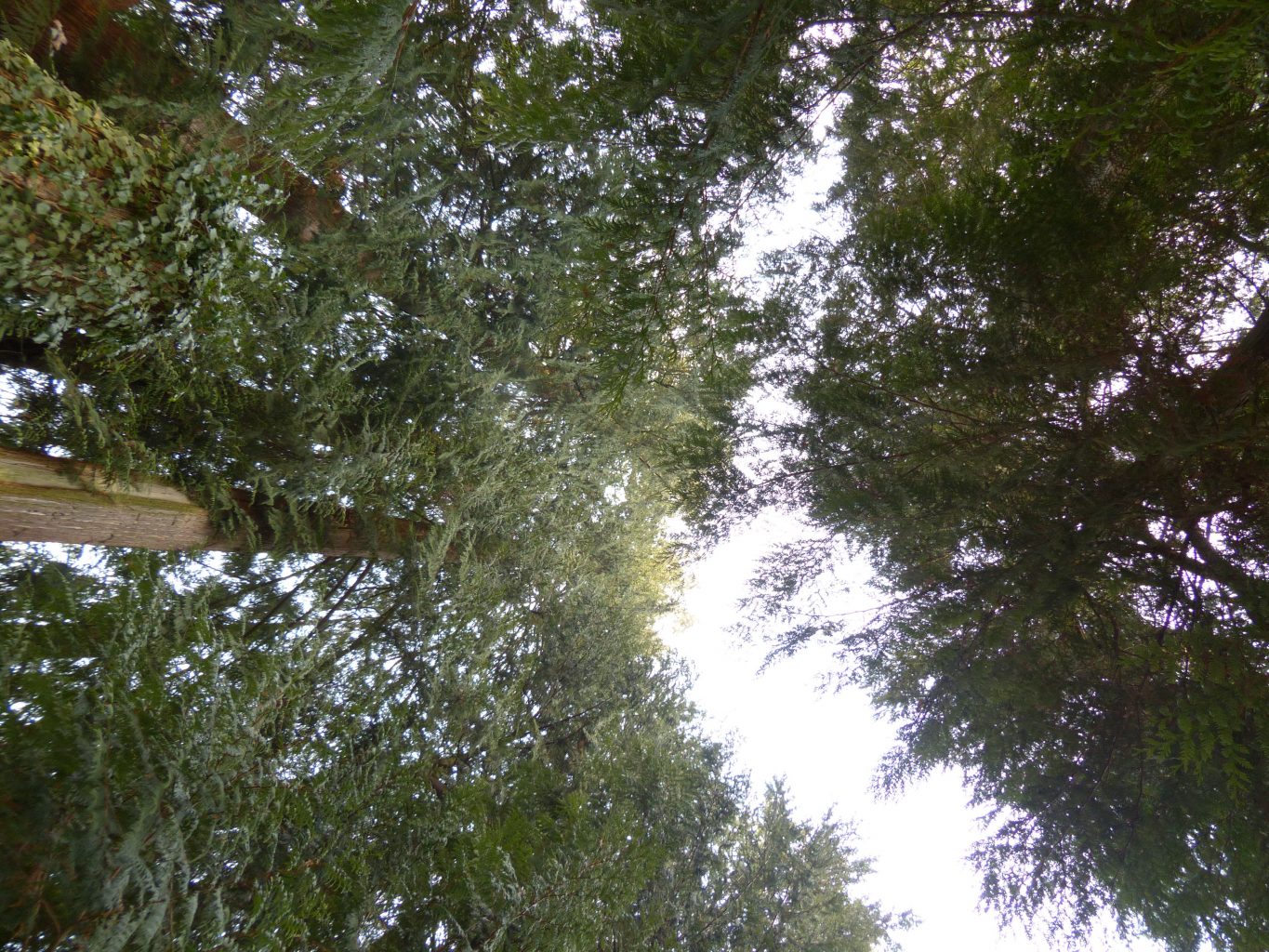
Humans are not the only beings who appreciate these trees. They provide a habitat for many species to find food and shelter. A butterfly species called Rosners hairstreak depend on them in order to be able to reproduce. Rodents, such as squirrels, shred the bark to keep line their nests for warmth in the winter. Birds and other little mammals find respite in their cavities. Bears and other animals use the hollows of fallen Western Redcedars as winter den.
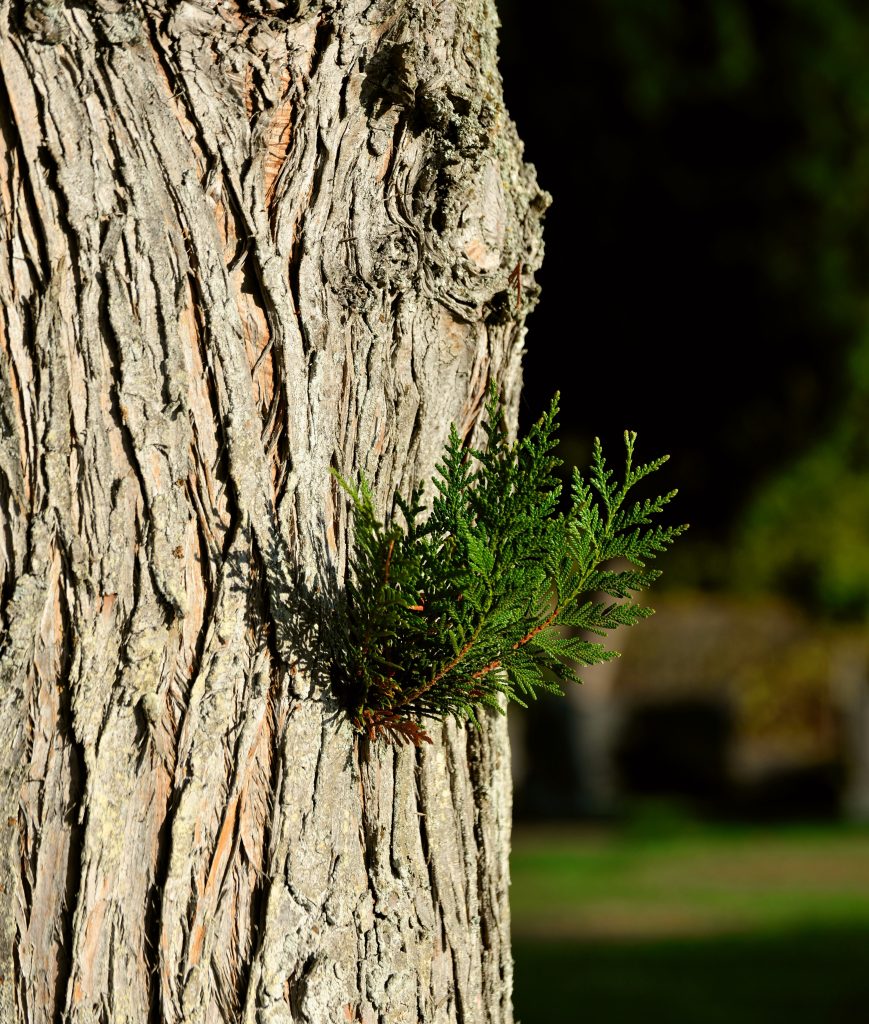
I am the heat of your hearth on the cold winter nights, the friendly shade screening you from summer sun, and the dancing bows that capture your imagination. I am the beam that holds your house, the board of your table, and the roof that shelters you from rain. I am the handle of your shovel, the bark of your basket, and the hull of your canoe. I am the medicine that heals you, the incense that carries your prayers, and tea that is used to cleanse your home. I am the wood of your cradle and the shell of your coffin. I am the breath of kindness and the flower of beauty. “Ye who pass by me, listen to my prayer: Harm me not.”
-Adapted by Elise Krohn from “Prayer of the Woods,” a forest preservation prayer that has been used for more than 1,000 years, author unknown.
We hope you are inspired to learn more and perhaps find your own personal relationship with the Western Redcedar.
